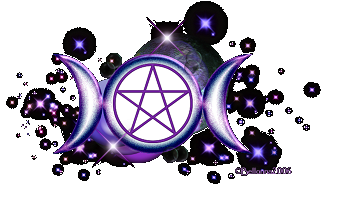History of the Craft
In
the beginning there was a man and a woman. that there was no doubt.
they became the Lord and Lady of all from whom all we come from. I am
rane. I am a pagan High Priestess. I believe that karma is a bitch
worth studying and worthy of praise. Long live karma. love and light
By
350 BCE, the Celts, an ancient people of West and Central Europe, had
developed a priestly class--the Druids. Like shamans, Druids knew about
the nonphysical world. But the Druids had refined their knowledge.
There were Druid healers and midwives, specialists in ritual, weather,
law and astrology. Druids were even said to be able to see in the
future. Many people trace the origins of Wicca back to the Druids and
their magickal knowledge. Unfortunately , as the Roman Empire grew, the
number of Druids dwindled.
In 371, the Roman Empire adopted
Christianity as the official state religion. Roman soldiers spread the
official state religion and their interpretation of it wherever they
went. Often this meant killing the priests of the local religion; this
slaughter included Druids. The Christian Church gained in religious,
political, and economic power.
Pope Gregory I (540-604), also
known as "the Great", is credited as being one of the major forces in
consolidating the power of the church and Christianize Europe. How
did he do it? He had 10,000 people baptized in England alone. He also
had churches built on the sites of PAGAN temples. He reasoned that the
people would continue to gather at those spots. But, instead of worshiping their old deities, they would be led in prayer by one of
his priests. In many areas, people developed a hybrid religion--in
outward appearance they were Christians, but deep down they still
believed in the old faith. You can see this phenomenon functioning
today in many parts of the world in the cult of the Virgin Mary. Many
churches dedicated to her are called "Our Lady" another name for the
Goddess.
After Gregory's death, despite a lot of infighting and
political intrigue, the pope and the Catholic Church continued to gain
power. But in a series of different popes worried about the various
types of Christianity that were sprouting up. To keep changes in Church
doctrine in check they employed inquisitors, men whose job it was to go
out and look for Christians whose beliefs or practices varied from what
the church prescribed. Christians who did no correctly follow the
church's teachings were branded heretics and imprisoned. Some were
even put to death. Despite the inquisitions, more and more people
became Christians or said they were Christians
FOOD FOR THOUGHT
~*~
When she was 13, French heroine and martyr Joan of Arc first heard a
voice from God. Her voices told her to help the French king-to-be in
battle. With her assistance, the king was eventually crowned, but Joan
fell into the hands of her enemies. While rumored to be a witch, she
was condemned for a list of offenses, including wearing men's clothing
and not bowing to the authority of the Church. The theologians who
tried her insisted that the voices she heard were not of divine origin.
Joan was burned at the stake for heresy in 1431. The judgment against
her was annulled in 1456. In 1920, the Catholic Church canonized her
as a saint.~*~
